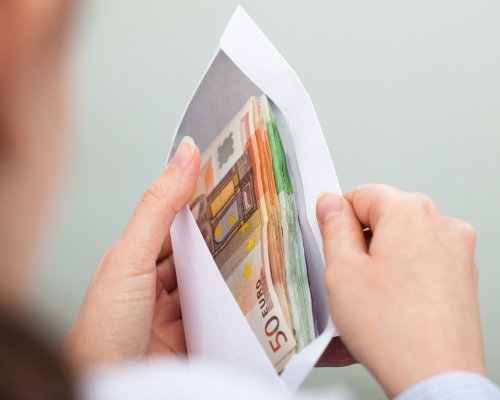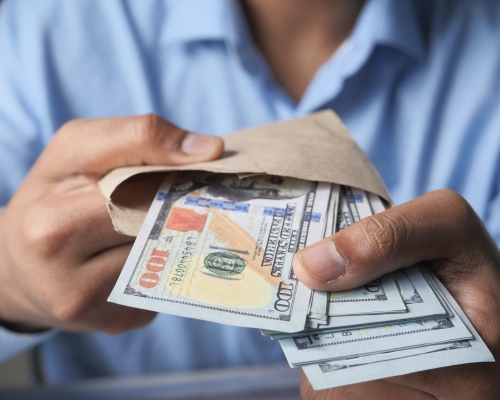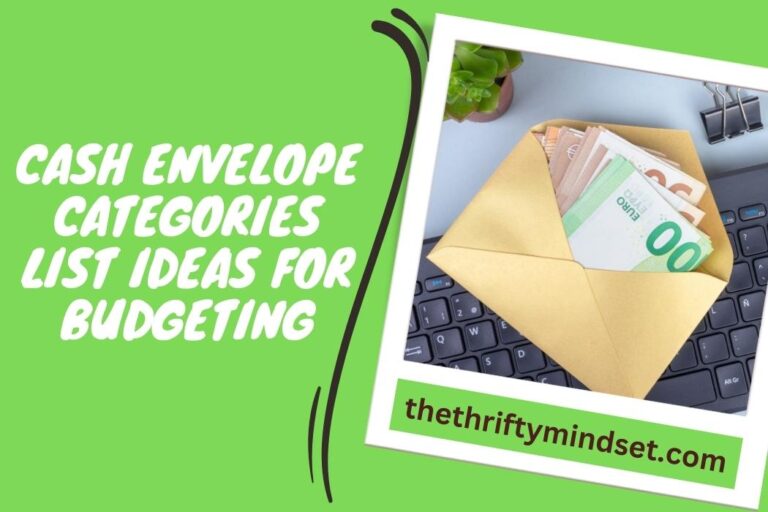The cash envelope system is a timeless classic in the world of budgeting. You’re here because you’ve felt the allure of crisp paper envelopes, each one a tiny vault safeguarding your financial future. But what categories should fill these envelopes? Groceries? Gas? Guilty pleasures?
The options can be dizzying. You’re not alone; many are paddling through the murky waters of financial planning, searching for Cash Envelope Categories and List Ideas For Budgeting.
So, let’s cut through the fog. This article will serve as your compass, guiding you through a curated list of categories that fit perfectly into your cash envelopes.
No more guesswork, just a straightforward path to financial clarity.
Why Choose the Cash Envelope System for Budgeting?
1. The Psychology Behind Cash Spending
The psychological aspects of using cash over digital methods can be quite compelling. Here are some key points:
Tangible Interaction: Handling physical cash makes the spending process more tangible, creating a deeper emotional connection to your money.
Pain of Paying: Research shows that people find it more painful to part with physical cash than to swipe a card, which can lead to more thoughtful spending.
Limited Resources: When you see the cash leaving your envelope, it serves as a visual reminder that your resources are finite, encouraging you to spend wisely.
Immediate Consequences: Using cash means you can only spend what you have in hand, eliminating the risk of overdraft fees or accumulating debt.
Simplified Choices: Cash spending often simplifies the decision-making process, as you’re less likely to make impulse purchases when you have to count out the money.
2. Visual Tracking for Financial Goals
The cash envelope system provides a unique visual approach to tracking your expenses and meeting financial goals:
Instant Overview: Just by looking at the envelopes, you can instantly gauge how much money is left for each category, making it easier to stick to your budget.
Physical Barriers: The separate envelopes act as physical barriers between different spending categories, preventing you from overspending in one area at the expense of another.
Goal Setting: You can set mini-goals for each envelope, such as saving a certain amount by the end of the month. Seeing the cash accumulate in the envelope can be a powerful motivator.
Expense Tracking: By keeping receipts in the corresponding envelopes, you can easily track where your money is going and identify areas for improvement.
Tactile Satisfaction: There’s tactile satisfaction in moving money from one envelope to another to meet goals or cover necessary expenses, which can make the budgeting process more engaging.
Setting Up Your Cash Envelopes

1. Organizing Your Envelopes
When it comes to arranging your cash envelopes, a systematic approach can make all the difference. The following guide will help you get started:
1. Identify Categories: First, pinpoint the various spending categories that are most relevant to your lifestyle. This could range from essentials like groceries and utilities to discretionary spending like entertainment.
2. Select Envelopes: Choose envelopes that are sturdy and easily distinguishable. You might opt for different colors or sizes for different categories.
3. Label Clearly: Use a permanent marker or printed labels to clearly identify each envelope with its designated category.
4. Initial Funding: Populate each envelope with a starting amount of cash based on your budget.
5. Designate a Replenish Day: Pick a specific day of the week or month to review and refill your envelopes according to your budget.
6. Storage: Decide on a secure and accessible location to store your envelopes. Some people prefer a home safe, while others might use a dedicated drawer.
2. How Much Cash to Allocate
Determining the right amount of cash to place in each envelope can be a balancing act. Consider these factors:
Budget Review: Take a close look at your overall budget. What percentage of your income should realistically go into each category?
Past Spending: Examine your past spending habits. Are there categories where you consistently overspend or underspend?
Financial Goals: Consider your short-term and long-term financial objectives. Are you trying to save for a vacation or pay down debt? Allocate your cash accordingly.
Flexibility: Keep in mind that life is unpredictable. It might be wise to have a miscellaneous or “emergency” envelope for unexpected expenses.
Trial and Error: Don’t be afraid to adjust the amounts as you go along. The first month is often experimental, and you’ll likely need to tweak your allocations.
Cash Envelope Categories List Ideas For Budgeting

1. Groceries
Covers:
- Food staples
- Snacks
- Beverages
- Produce
Tips:
- Plan your meals in advance to avoid unnecessary purchases.
- Use coupons and discounts to save on your grocery bill.
- Avoid impulse buys by sticking to a shopping list.
- Always shop with a list to keep your focus.
2. Entertainment
Covers:
- Movies
- Concerts
- Eating out
- Sports events
Tips:
- Set spending limits for each entertainment activity.
- Prioritize activities that bring you the most joy.
- Seek out discounts and special offers for events.
- Attend matinees or off-peak times to save money.
3. Transportation
Covers:
- Gas
- Maintenance
- Parking
- Public transit
Tips:
- Consider carpooling to work or events to save on gas.
- Utilize public transportation options when possible.
- Regularly maintain your vehicle to avoid costly repairs.
- Reduce unnecessary trips to conserve fuel.
4. Shopping
Covers:
- Clothes
- Furniture
- Home Decor
- Electronics
Tips:
- Compare prices online before making any big purchases.
- Shop during sales to get the best deals.
- Limit splurges to items you’ve planned for.
- Create a budget specifically for shopping expenses.
5. Personal Items
Covers:
- Cosmetics
- Toiletries
- Grooming
- Skincare
Tips:
- Buy toiletries and grooming items in bulk to save money.
- Choose generic brands for basic items like soap and shampoo.
- You should restrict the purchase of luxury items to special occasions.
- Reuse containers when possible to save on packaging costs.
6. Gifts & Holidays
Covers:
- Birthdays
- Christmas
- Anniversaries
- Special occasions
Tips:
- Plan gift purchases well in advance to spread out costs.
- Consider making DIY gifts for a personal touch.
- Put aside a small amount of money each month for upcoming holidays.
- Minimizes extravagance by focusing on meaningful rather than expensive gifts.
7. Medical & Pharmacy
Covers:
- Prescriptions
- Doctor visits
- Over-the-counter meds
- First aid
Tips:
- Utilize insurance benefits for medical visits and prescriptions.
- Compare prices at different pharmacies for the best rates.
- Opt for generic medicine when possible to save money.
- Schedule regular check-ups to catch issues before they become expensive problems.
8. Fun Money
Covers:
- Splurges
- Luxuries
- Hobbies
- Treats
Tips:
- Allocate fun money wisely to ensure it lasts the entire month.
- Save up for big-ticket items instead of making impulsive purchases.
- Reduce the frequency of splurges to make them more special.
- Enjoy your fun money responsibly to avoid regrets.
9. Pet Funds
Covers:
- Food
- Vet visits
- Toys
- Grooming
Tips:
- Buy quality food in bulk to save in the long run.
- Schedule regular vet check-ups to monitor your pet’s health.
- Take into account making DIY toys to entertain your pet.
- Limit treats and extras to special occasions or achievements.
10. Miscellaneous
Covers:
- Unplanned expenses
- Emergencies
- Random needs
- One-time costs
Tips:
- Keep a reserve fund for unexpected expenses.
- Do not use this envelope except in true emergencies.
- Plan for unpredictability by setting aside a small buffer.
- Assess the necessity of each expense before dipping into this fund.
Final Thoughts
Although the cash envelope system is a tried-and-true budgeting method, its effectiveness depends largely on the categories you choose and how you manage them. What sets this system apart is its tactile and visual nature, which isn’t just about allocating funds but also about creating a physical, emotional connection with your money.
This article has provided a comprehensive list of categories, from essentials like groceries and transportation to discretionary spending like entertainment and “fun money.” Each category comes with practical tips to help you spend wisely and save effectively.
I’m Grayson Watson, your frugal companion and the brain behind this money-saving extravaganza. Strap yourself in, because we’re about to embark on a wallet-friendly adventure like no other. Learn More!

